Solar LED lights
Years ago, the thought of powering lights from sunlight sounded like science fiction. But nowadays there are solar panels and solar LED lights everywhere.
Everyone has heard of them and may be familiar with what they are to some extent. Solar LED lights are a great alternative to standard electric lighting because they draw energy from the sun and convert it to electric lighting.
If you are aware of the undeniable benefits of solar LED lights and are interested in buying them, you have come to the right place: the Elmark online store.
Or if you just want to find out about this kind of lighting unit out of pure curiosity, do not rush to close this page.
We will give you useful information and interesting facts about solar LED lights and explain their working principle below.
What are solar LED lights?
Generally speaking, solar LED lights are lighting systems consisting of an LED lamp, a solar panel or panels, a battery, a charge controller and, depending on the model, an inverter.
By converting solar energy into electricity, solar LED lights can fully replace other light sources such as candles, gas lights and even standard electric lighting.
They have a lower operating cost, since the renewable energy they draw from the sun is free. In addition, solar LED lights do not produce air pollutants, unlike gas lights for example.
How solar LED lights work
You are sure to have encountered and heard about solar LED lights at least once in your life, but how often have you thought about how they work?
Although at first glance their operating principle may seem simple, i.e. collecting solar energy to power the LED, more detailed examination reveals that things are not so simple.
We have already mentioned the components of a solar LED light and now we will introduce you to its operating principle.
Solar LED lights work on the so-called photovoltaic effect. The most important part of a solar LED light is a photovoltaic cell (also called a solar cell).
This solar cell is the part that converts sunlight into direct current. The solar cell is easily visible: it looks like a dark panel at the top of solar LED lights.
A solar cell is made up of several layers of crystalline silicon and chemicals that create layers of negatively charged electrons and positively charged spaces.
As it passes through the solar cell, the solar energy excites the negatively charged electrons and presses them into positively charged spaces. The positively charged spaces then forward the flow of electrons in the form of direct current, through wires embedded in the solar cell, to a battery where electricity is stored until required for use.
The battery is usually charged during the day, when sunlight is converted to electricity.
When evening falls and the sun sets, the solar cell stops collecting sunlight. At this point, the photocell detects the darkness and automatically turns on the light, which is usually made of several LEDs. Then the battery that supplies these diodes at night comes into the whole equation.
The whole process is repeated on a daily basis. It is fully automated and you will not have to monitor or do anything with your solar LED lights.
Do solar LED lights need direct sunlight to work?
One of the main concerns regarding solar LED lights is what happens to them when the weather is windy, rainy or with extreme temperatures.
As the batteries in solar LED lights are powered by sunlight, there are understandable concerns as to whether these lamps would operate without direct sunlight.
Logically, the amount of sunlight the solar LED light has received during the day will have a direct effect on how it will shine at night. On average, a lamp that is fully charged with 8 hours of sunlight will work for about 15 hours.
Cloudy weather, for example, will certainly affect the charging of your solar LED lights, since the clouds will prevent some of the sunlight from reaching the solar panel.
Using solar LED lights for an extended time without sufficient sunlight at a given time will diminish their ability to fully charge.
What you can do is place your solar LED lights in strategic places where they will receive the most sunlight and the least shade.
Be careful to avoid areas where objects, vegetation, or garden accessories may obscure the lighting unit.
How long solar LED light batteries last
As with all rechargeable products, solar LED light batteries charge and go flat.
If it stays flat for a long time, this can damage the battery and make it unusable.
The question asked by many people who want to buy solar LED lights is how long they last in the long run.
The answer here cannot be straightforward, as battery life depends on many factors, especially on production quality.
Other factors that affect battery life include weather conditions, the charging frequency, the solar energy entering the light and the frequency at which the battery discharges.
In most cases, solar LED light batteries last for at least 2 years, which is considered a minimum standard.
However, with the 2-year Elmark warranty, you will not have to wonder whether your solar LED light batteries will last 2 years or let you down earlier: you can rest assured that you will have a minimum of 2 years of trouble-free use out of our solar LED lights.
Can solar LED lights work without the sun
This question is a major disincentive for most people thinking of buying solar LED lights. For this reason we thought we should “scatter the clouds” on this topic and clarify the issue.
The main problems with solar LED lights come during cloudy days when there is less direct sunlight.
But this does not mean that your solar LED lights do not receive sunlight. Facts show that even though cloud and rain attenuate the sunlight, your solar LED lights still receive some of the light and they charge up.
Clouds disperse the power of sunlight, but panels still charge on cloudy days.
However, the lack of direct sunlight means that you will only get 1/3 or 1/2 of the potential of a solar LED light. As a result, your lamps will work less well than normal.
Even if a few consecutive cloudy days are on the way, your solar LED lights will work during this period. The problem comes when solar LED lights do not get fully charged for too many days in a row, as this will affect battery life and efficiency.
-
to the product
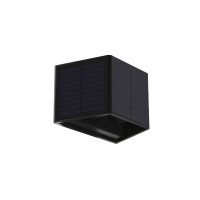 EL-1321 SOLAR LED WALL LAMP 40LM CCT IP54 98SOL1321
EL-1321 SOLAR LED WALL LAMP 40LM CCT IP54 98SOL1321Luminous flux 40 lm Colour temperature CCT: 3000/7000/4500 Warranty 
-
-
to the product
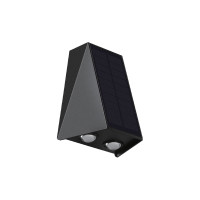 EL-13223 SOLAR LED WALL LAMP 40LM CCT IP54 98SOL13223
EL-13223 SOLAR LED WALL LAMP 40LM CCT IP54 98SOL13223Luminous flux 40 lm Colour temperature CCT: 3000/7000/4500 Warranty 
-
-
to the product
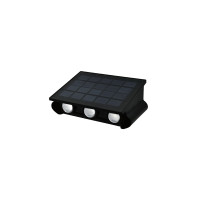 EL-13236 SOLAR LED WALL LAMP 40LM CCT IP54 98SOL13236
EL-13236 SOLAR LED WALL LAMP 40LM CCT IP54 98SOL13236Luminous flux 40 lm Colour temperature CCT: 3000/7000/4500 Warranty 
-
-
to the product
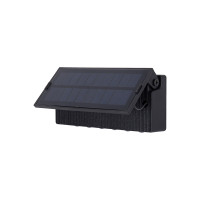 EL-132412 SOLAR LED WALL LAMP 40LM 3000K IP54 98SOL132412
EL-132412 SOLAR LED WALL LAMP 40LM 3000K IP54 98SOL132412Luminous flux 40 lm Colour temperature 3000 Warranty 
-
-
to the product
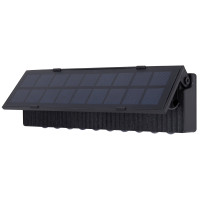 EL-132420 SOLAR LED WALL LAMP 50LM 3000K IP54 98SOL132420
EL-132420 SOLAR LED WALL LAMP 50LM 3000K IP54 98SOL132420Luminous flux 50 lm Colour temperature 3000 Warranty 
-
-
to the product
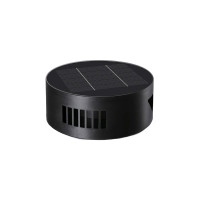 EL-1472 SOLAR LED WALL LAMP 50LM 3000K IP44 98SOL1472
EL-1472 SOLAR LED WALL LAMP 50LM 3000K IP44 98SOL1472Luminous flux 50 lm Colour temperature 3000 Warranty 
-
-
to the product
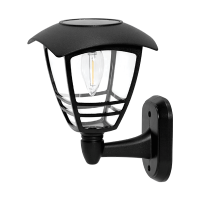 EL-23379 SOLAR LED WALL LAMP 0.3W IP44 98SOL23379
EL-23379 SOLAR LED WALL LAMP 0.3W IP44 98SOL23379-
Brand

Power 0.3W Include lightsource LED IP code IP44 Dimensions (mm) L:139/H:210 Warranty 
-
Brand
-
to the product
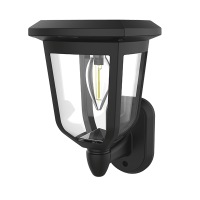 EL-23405 SOLAR LED WALL LAMP 0.3W IP44 98SOL23405
EL-23405 SOLAR LED WALL LAMP 0.3W IP44 98SOL23405-
Brand

Power 0.3W Include lightsource LED IP code IP44 Dimensions (mm) L:130/H:200 Warranty 
-
Brand
-
to the product
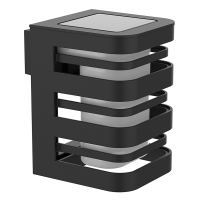 EL-23456 SOLAR LED WALL LAMP 0.42W IP44 98SOL23456
EL-23456 SOLAR LED WALL LAMP 0.42W IP44 98SOL23456-
Brand

Power 0.42W Include lightsource LED IP code IP44 Dimensions (mm) L:100/H:125 Warranty 
-
Brand
-
to the product
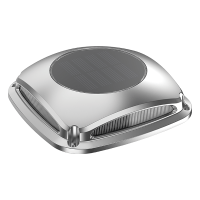 EL-41073 SOLAR LED DRIVEWAY LIGHTS 0.3W IP44 98SOL41073
EL-41073 SOLAR LED DRIVEWAY LIGHTS 0.3W IP44 98SOL41073-
Brand

Power 0.3W Include lightsource LED IP code IP44 Dimensions (mm) L:121/H:29 Warranty 
-
Brand
-
to the product
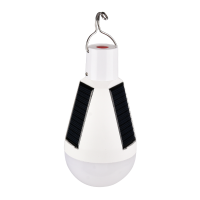 SOLAR CAMPING LAMP 300LM, WHITE 98SOL316
SOLAR CAMPING LAMP 300LM, WHITE 98SOL316-
Brand

Power 4W Include lightsource LED Luminous flux 300 lm Colour temperature 4000 IP code IP44 Dimensions (mm) D:70xH:138 Warranty 
-
Brand
-
to the product
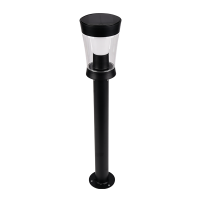 SOLAR GARDEN LAMP 3W IP54, BLACK 98SOL311
SOLAR GARDEN LAMP 3W IP54, BLACK 98SOL311-
Brand

Power 3W Include lightsource LED Luminous flux 500 lm Colour temperature 4000 IP code IP54 Dimensions (mm) L:123/H:630 Warranty 
-
Brand
-
to the product
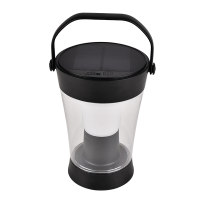 SOLAR GARDEN LAMP 3W IP54, BLACK 98SOL313
SOLAR GARDEN LAMP 3W IP54, BLACK 98SOL313-
Brand

Power 3W Include lightsource LED Luminous flux 500 lm Colour temperature 4000 IP code IP54 Dimensions (mm) L:122/H:193 Warranty 
-
Brand
-
to the product
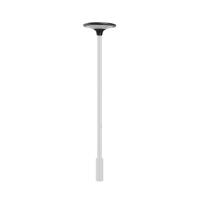 SOLAR GARDEN LIGHT 20W, IP54 98SOL310
SOLAR GARDEN LIGHT 20W, IP54 98SOL310-
Brand

Power 20W Include lightsource LED Luminous efficiency 105 lm/W IP code IP65 Dimensions (mm) L:200/H:105 Warranty 
-
Brand
-
to the product
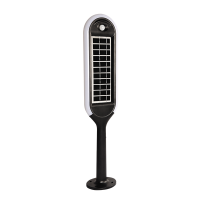 SOLAR GARDEN LIGHT 5W, IP54 98SOL309
SOLAR GARDEN LIGHT 5W, IP54 98SOL309-
Brand

Power 5W Include lightsource LED Luminous efficiency 80 lm/W IP code IP65 Dimensions (mm) L:145/H:96 Warranty 
-
Brand
-
to the product
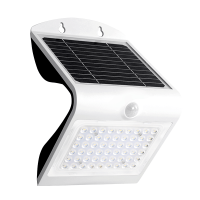 SOLAR LAMP WITH SENSOR 4W IP65 98SOL202
SOLAR LAMP WITH SENSOR 4W IP65 98SOL202-
Brand

Power 4W Include lightsource LED Luminous efficiency 125 lm/W IP code IP65 Dimensions (mm) L:211/H:140/W:115 Warranty 
-
Brand
-
to the product
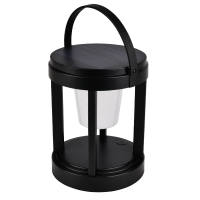 SOLAR LAWN LAMP 3W IP44, BLACK 98SOL315
SOLAR LAWN LAMP 3W IP44, BLACK 98SOL315-
Brand

Power 3W Include lightsource LED Luminous flux 330 lm Colour temperature 4000 IP code IP54 Dimensions (mm) L:145/H:182 Warranty 
-
Brand
-
to the product
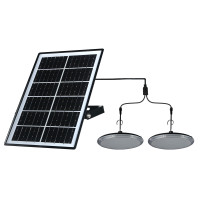 SOLAR LED LIGHTS 2X5W IP65, BLACK 98SOL318
SOLAR LED LIGHTS 2X5W IP65, BLACK 98SOL318Power 2x5W Luminous flux 950 lm Colour temperature 6000 Warranty 
-
-
to the product
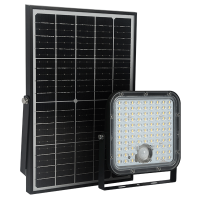 SOLAR LED SPOTLIGHT WITH SENSOR 10W IP65 98SOL307
SOLAR LED SPOTLIGHT WITH SENSOR 10W IP65 98SOL307-
Brand

Power 10W Include lightsource LED Luminous efficiency 130 lm/W IP code IP65 Dimensions (mm) L:153/H:144 Warranty 
-
Brand
-
to the product
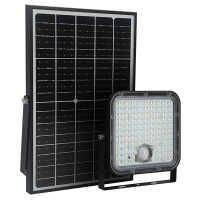 SOLAR LED SPOTLIGHT WITH SENSOR 30W IP65 98SOL308
SOLAR LED SPOTLIGHT WITH SENSOR 30W IP65 98SOL308-
Brand

Power 30W Include lightsource LED Luminous efficiency 150 lm/W IP code IP65 Dimensions (mm) L:253/H:220 Warranty 
-
Brand
Prices are VAT inclusive





